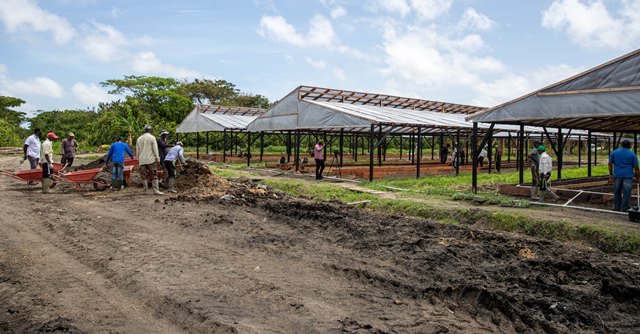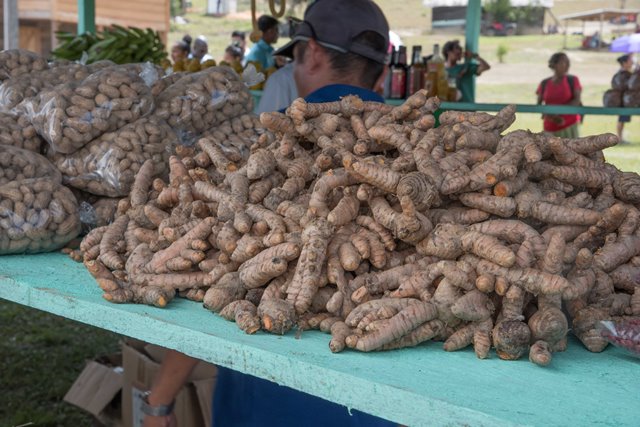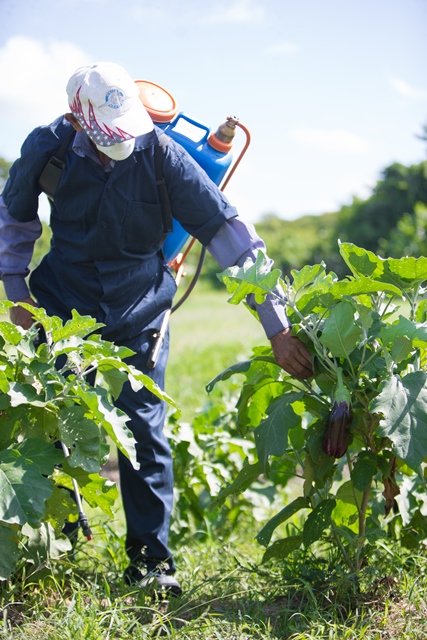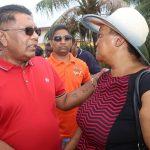– LCDS 2030
With global temperatures continuously on the rise, and climate change proving a growing issue for nations across the world, the Government of Guyana has begun the development of several measures to promote climate-smart practices in the agriculture sector.
As outlined in the updated Low Carbon Development Strategy (LCDS) 2030, these measures will target the cultivation of high-value products, while providing support for inputs for climate-smart cultivation and pursuing applicable research to improve farmer profitability.
The measures will also enhance Guyana’s low-carbon development.
One of the most notable among these is the Agriculture and Innovation Entrepreneurship Programme (AIEP), which will see the construction of 300 shade houses to enhance the production of high-value crops like cauliflower and broccoli.
These shade houses will be managed by past and present agriculture students who will form a company, with each becoming a shareholder.

During the launch of the programme in 2022, President, Dr. Mohamed Irfaan Ali, had said the pilot project, comprising 25 shade houses, is capable of generating close to $70 million per year.
According to data available at that time, he noted that the shade house production per cycle was expected to be 3,000 pounds, with three cycles per annum; placing estimated production levels at 9,000 pounds of produce per year.

The wholesale value of this is $57 million, while the retail value stands at approximately $112 million.
Other Strategies for Climate-Smart Agriculture
Increased climate-smart agricultural practices like drip irrigation, greenhouse cultivation, crop rotation, and diversification are also among the measures outlined in the LCDS 2030.
These promote water conservation, reduce erosion, improve soil formation and structure, and encourage more stable ecosystems; which will boost the supply of organic nutrients to the soil, and reduce the need for artificial fertilisers.
The government is not only developing policies centered around reduction but prevention and reinforcement as well.
Already, the National Agricultural Research and Extension Institute (NAREI) has commenced work on varietal development for rice to address the issue of saline intrusion into estuaries.
The National Hydrometeorological (Hydromet) Office, will also be strengthened to support farmers with access to the short, medium, and long-term weather and climate forecast that aid the farming community in its decision-making process.
The Sophia, Parika, and Mabaruma agro-processing and packing facilities will be sufficiently equipped to meet the growing needs of the agriculture sector while maintaining sustainable development.
Government interventions will also assist producers in meeting international market protocols for products, and therefore gaining access to new markets.

Fisheries, marine, inland and aquaculture
With a complement of some 15,000 persons, the fisheries, marine, inland, and aquaculture systems will also receive immense government support.
Work has already begun to enhance the achievement of sustainability certificates, such as the Marine Sustainability Council (MSC) certification.
This certification, which reflects the most up-to-date understanding of internationally accepted fisheries science and management, will highlight a higher standard in the operation of Guyana’s fisheries industry, increasing access to global markets, and thereby improving the industry’s viability while protecting the ocean’s ecosystem.
The LCDS 2030 also details the support of aquaculture as a major contributor to food security, the implementation of programmes that aim at advancing the maintenance and protection of sustainably managed freshwater ecosystems, and research in indigenous high-value species and the use of local low-cost feed ingredients into aquafeed development.
The greenhouse at the Satyadeow Sawh Aquaculture Station will also be upgraded for the promotion of aquaponics, as a climate-smart option for food production.
The LCDS framework, first introduced by the then President and current Vice President of Guyana, Dr Bharrat Jagdeo, maps the path of Guyana’s new growth trajectory in a non-polluting way.
Through policies carefully crafted by the President Dr Mohamed Irfaan-Ali-led government, all sectors will continue to contribute to and play a role in the growth and development of Guyana’s economy in a modern, sustainable way.








